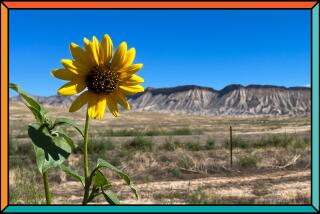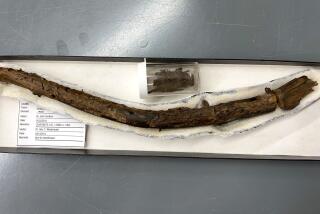FLORA OF THE VALLEY : Tumbleweed
- Share via
Most tumbleweed is thorny and, by usual standards, not very attractive. But the eye often is attracted to the weeds as they roll across open spaces in the San Fernando Valley.
“To some people, these plants must symbolize a certain amount of freedom,” said John W. Thieret, a botany professor at Northern Kentucky University. The windblown weeds, he said, appear to “wander where they want. Isn’t there a song that goes, ‘Tumbling along like a tumbling tumbleweed?’ ”
There was a song, “Tumbling Tumbleweeds,” and a 1935 Western film of the same name starring Gene Autry.
Tumbleweed flourishes in breezy, open spaces, and is common in upland plains of South America, arid expanses of Western Africa and many Valley vacant lots.
The weeds grow along the east end of the Sepulveda Basin. When they mature, wind snaps them off at the stem and sends them rolling across the land, depositing thousands of seeds on the way.
The weeds commonly take a round shape, forming an intricate mass of thorny branches up to four feet in diameter. They often collect along fences and gates, and they can be difficult to clear away, Thieret said, noting:
“They’re miserable plants.”
Tumbleweed is believed to have been introduced to this country more than 100 years ago from Europe and Asia, Thieret said. An often-found species, Russian thistle, got its name from Russian wheat seeds, in which botanists believe tumbleweed seeds were imported, “probably inadvertently,” Thieret said.
“I can’t imagine anybody bringing any of them over for garden use because none of them is particularly pretty.”
More to Read
Sign up for Essential California
The most important California stories and recommendations in your inbox every morning.
You may occasionally receive promotional content from the Los Angeles Times.










